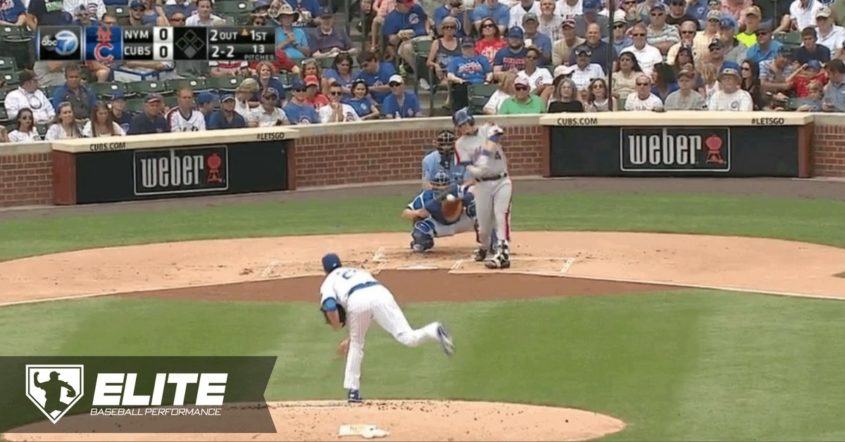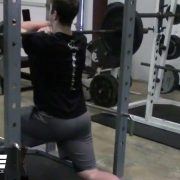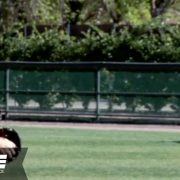Teaching The Modern Changeup
The changeup is one of the least sensationalized pitch in baseball, but perhaps one of the most important to develop.
This part 3 of a 3 part series on the “modern” change up. Here in part three, the goal is to explain how pitchers should best use their shiny new changeup, because executing the pitch in a game is ultimately the only thing that matters. If you haven’t read the previous posts, click below to get started:
- The Modern Change Up: In part one, we discussed the theory of the changeup, and how a pitcher can reliably remove speed, apply spin, and produce a consistent changeup that sinks, runs, and deceives a hitter.
- How to Throw a Changeup: In part two, I explained my method of teaching it, with cues for both the coach and the pitcher.
It’s Not One Changeup, It’s Four
The biggest thing to understand about the modern changeup is that its action and effect varies depending on where it’s thrown. Let’s talk about five common locations into which it will be thrown. But first, I want to explain the terminology of arm-side versus glove-side, which describes pitch location without needing to know the handedness of the hitter
Thrown Glove-side: OK version; flattens out a bit and tends to be a little harder
The pitcher is forced to hold onto the pitch just a little longer to locate it on the glove-side of the plate, which means he can’t roll his hand inward quite as well; this results in a slightly harder changeup with less movement. A pitcher can throw this one, but it makes less sense when other locations will result in better action and deception.
Thrown Middle: Good version; will both sink and run, with correct speed differential
Thrown to the middle, it’s easy to pronate in on the pitch to get excellent sink, run and speed change. This was my favorite location to throw it because it would induce swings, and I could just let the pitch rip. Depending on how low in the zone I’d throw it, results would usually be a weak ground ball or swing and miss. The heavy downward action is a major failsafe, and pitchers don’t need to fear throwing it down the middle.
Thrown Arm-side: Best version; has the most sink, run and speed differential
The arm-side version is dynamite. Start it on the outer half or outer third, and it will sink below the strike zone on or off the corner of the plate. When a pitcher gets ahead in the count and has this in his arsenal, he can finish opposite-handed hitters off with ease, and bury a changeup down and in to strike out same-side hitters just as well. I punched out plenty of righties with righty-righty changeups; at worse, if they make contact, they’ll hook it foul.
Arm-Side Hanger: when a pitcher flies open and gets his hand too much on the side of it.
Pitchers are afraid of hanging changeups, and for good reason – they come in as slow fastballs at the belt, and fly out of the park in a hurry. But, when they learn to pronate their changeup, a good amount of sidespin will be applied even to hangers. The result is that many hanging changeups will “hunt” a same-side hitter. For me as a righty, I would drag occasionally through a changeup and watch as it bore hard into a righty’s hands, basically chasing him as he started his swing; they rarely could much of anything but try to get out of the way. In a sense, applying pronation to the changeup is a failsafe when a pitcher invariably pushes a few each game.
The GIF above is a great example of an arm-side hanging changeup that, if it didn’t have a lot of side-spin, might have lingered in the strike zone. It’s not a good pitch, but it keeps itself out of trouble.
Middle Hanger: you’re screwed just like any other “hung” off-speed pitch
When thrown at mid-thigh or above, out on the middle of the plate, speed-differential can’t save a pitcher, as hitters can reset themselves. If two changeups have the same action and speed differential, the one up in the zone will be easier for a hitter to re-adjust to despite being fooled early in the pitch’s flight.
The challenge is learning how to locate the pitch, which is more difficult because of the heavy movement. To throw the modern changeup for strikes, the pitcher needs to learn to use his eyes as a targeting system.
Focal Point: Differentiating Starting And Ending Point
The catcher calls for a four-seamer. You lock your eyes on the mitt, kick and deliver; the pitch flies straight, and you hit you your spot. Next, he calls a changeup. You take your new changeup grip, lock eyes on the mitt then kick and deliver. You miss your spot down and arm-side by eight inches in both directions. What just happened?
Even at high levels, many pitchers don’t understand the concept of the starting point for breaking pitches. The starting and ending point for a slider are different. If a pitcher stares down the mitt and throws his slider for it, he either misses his spot by exactly the amount the slider breaks, or subconsciously starts the pitch at a higher, more lateral location to account for the break. Just like in golf – if you have a slice you can’t fix, just aim a little more to the side so your ball slices into the fairway, as opposed to into the rough. Right? Right.
As pitchers, we need to know our pitch will end up the in place we intend; for that reason, we musts pick a focal point that that represents the starting point on the trajectory that will result in our desired spot. So, if you throw a 12-6 curveball that breaks exactly eight inches, and you want to throw it at the knee cap, the focal point must be eight inches above the knee cap.
Using focal points to account for break is the only reliable method of controlling breaking pitches, and the modern changeup. Because the changeup you’ve learned in this article series will have a consistent action – typically an equal combination of arm-side run and sink – the pitcher must learn where to start the pitch so it sinks and runs into the catcher’s mitt. Otherwise, every changeup that starts for the catcher’s mitt will sink out of the strike zone, and it will be tough to throw for strikes.
Three Key Steps:
- Learn and develop the pitch until it has consistent, dependable action.
- Figure out where you should start the pitch so that its typical action will cause it to hit your desired spot.
- Work hard with your eyes – many pitches take their eyes off their target, which makes establishing a strong focal point connection difficult.
Throw As Many Changeups As Possible
Even if a pitcher today is striking out the world with just a fastball-slider combination, that will one day run out as he ascends the ranks of baseball. Learning a changeup today is an investment in avoiding that slump in the future, when the level of play catches up to an overachiever. Any new pitch takes at least a year to master, so start now.
The problem, though, is that playing changeup catch with your buddies isn’t, well, fun. Young pitchers like watching their curveball break, slider slide, and their brutal knuckleball occasionally knuckle. No pitcher has ever said, Hey! Let’s see who can throw the most deceptive changeup! Best out of ten!
The changeup will be the pitch that you need to get opposite-handed hitters out in a jam, the pitch you go to when a hitter picks up your breaking ball well, and when you need to induce that double-play ball with the bases loaded. It will be the pitch that makes everything else you throw better.
And, if a pitcher wants any chance at starting in college or pro baseball, a changeup is a requirement. The only guys who don’t throw changeups are select reliever specialists and the hardest-throwing, back-of-the-bullpen type pitchers who see more risk than reward in throwing 90mph changeups when the game is on the line.
Take Home
The changeup is evolving, and advanced metrics are showing us that movement and speed-change is superior to speed change alone. Learning a changeup with advanced qualities – more than just speed change– gives a pitcher a chance to be on the leading edge of advances in baseball.
Dan Blewett
Latest posts by Dan Blewett (see all)
- What Causes A Mental Meltdown in Baseball? - September 3, 2019
- Two Common Curveball Mistakes Pitchers Should Avoid - July 30, 2019
- Is Heavy Lifting Good For Pitchers? - July 2, 2019











Leave a Reply
Want to join the discussion?Feel free to contribute!